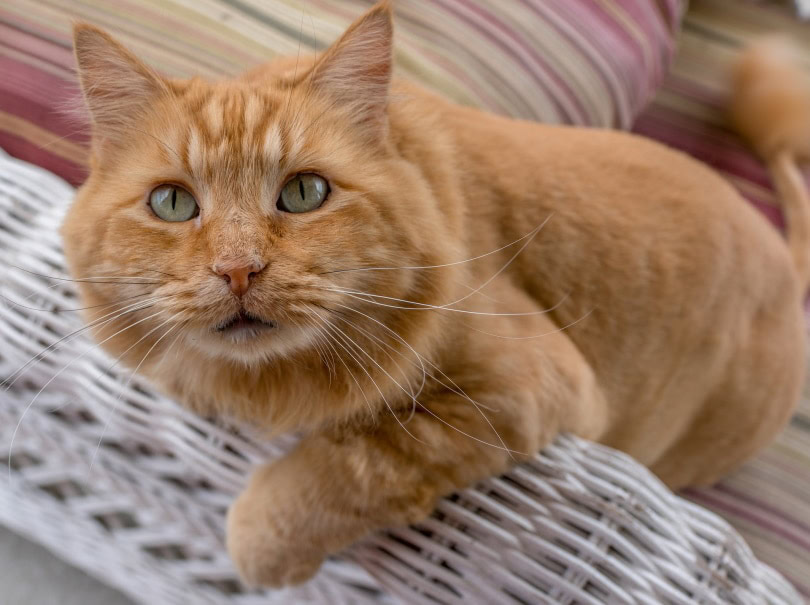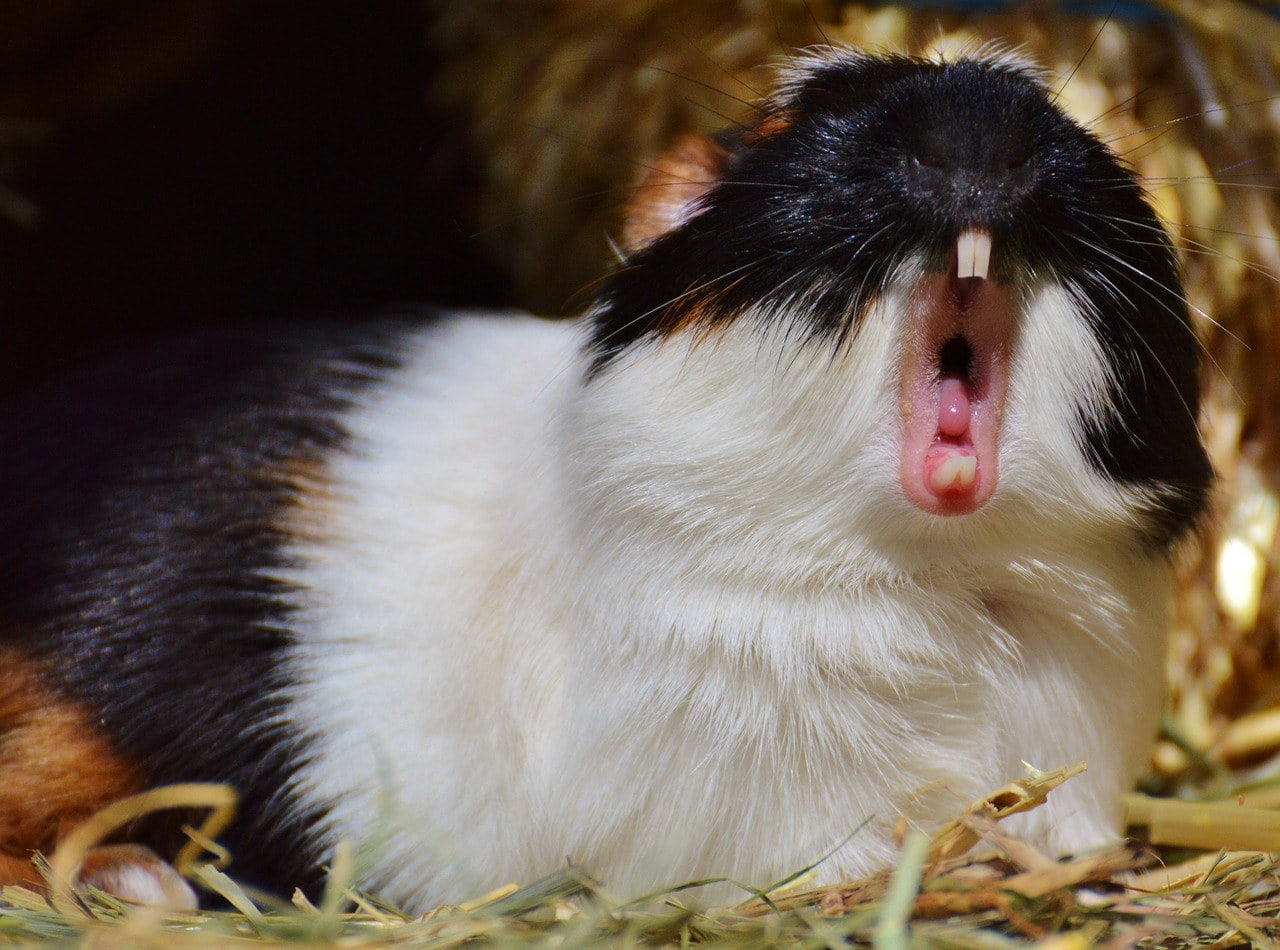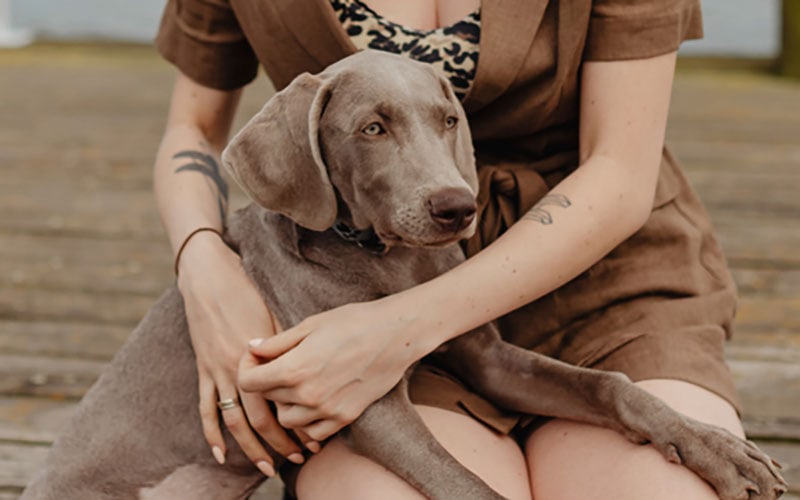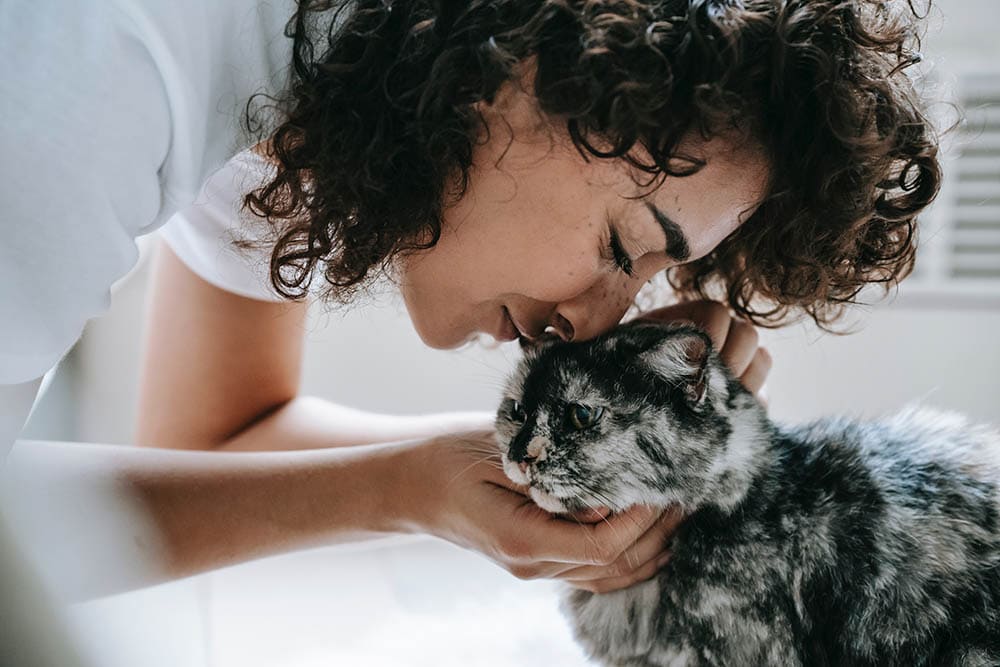VET APPROVED

The information is current and up-to-date in accordance with the latest veterinarian research.
Learn more »Click to Skip Ahead
Cat owners understand that their four-legged companions have a language all their own. Cats tend to make sure their human is aware of their wants, needs, and feelings at all times. Sometimes unusual behavior and body language coming from your cat may not be an uncommon occurrence.
Obviously, blinking serves its typical purpose of keeping the eyes wet, but can it be included in a cat’s means of communication and body language? The answer is, yes. Whether it’s that slow, drawn-out blink or the wide-eyed dead stare followed by what seems like a perfectly timed blink, your cat has something to say.
The good news is you are not crazy. While your cat does blink out of necessity, those blinks that give you a feeling your cat has something to say do have some substance regarding cat language. Let’s look into what it means when your cat blinks at you, for any reason.

The 3 Reasons Behind When a Cat Blinks
1. Regular Blink
Not all blinking has some deeper, emotional meaning behind it. Cats, just like humans, must blink to cleanse and moisten their eyes. Every time they close their eyelids, secretions from the tear glands are swept over the surface of their eyes to flush away any dirt, debris, and dust particles. Not only does it cleanse but it lubricates the surface of the eyeball and is a necessary, involuntary function.
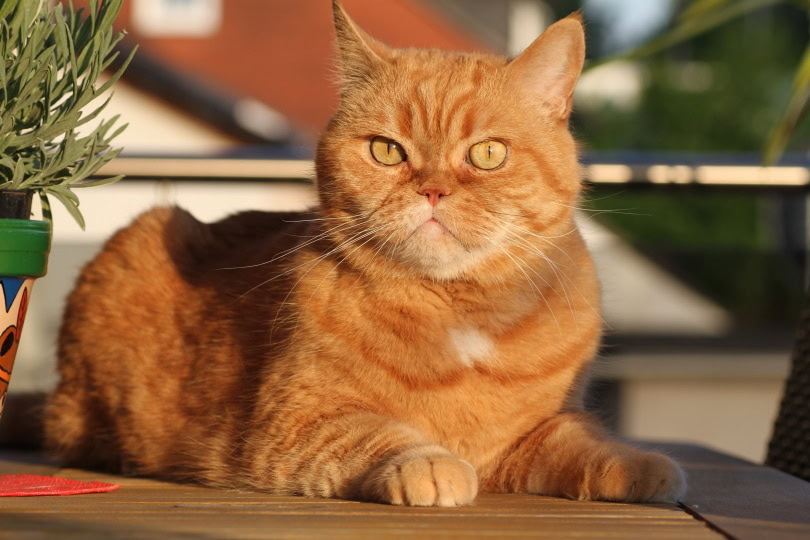
2. Slow Blink
A cat’s slow blink is very recognizable, and you are likely picturing your cat doing it as you read about it. It may not be something you think of instantly when interacting with your cat, but it can happen quite often and if it does, that’s a great sign.
The slow blink will only come from a relaxed and comfortable cat and their overall body language is a telltale sign. When a cat is under stress, the blinks tend to be faster since they are on high alert, and they may even wince. You will notice the slow blink when the body and ears are in a relaxed position and the cat may look like they are dozing off.
This subtle way of communicating through body language is a way that your cat is telling you they are relaxed and content and is like when a human gives a soft, warm smile. Studies even show that you can try to bond with your cat by slow blinking back at them.
The results showed that cats are more likely to respond to a human’s slow blink with one in return. They may even be more likely to approach an unknown person that slowly blinks at them since it is reflecting the contentment and peace they feel through this behavior.
Having your cat exhibit this behavior with you is a true sign that they trust you and feel affection toward you. Doing it back and forth is a way of sharing those affections and forming a stronger bond and rapport with your cat. Make sure to keep your body language calm and be stress-free when trying this as cats are great at picking up on your energy.
3. Direct Stare With Quick Blinks
A direct stare with erect ears is threatening and a sign of possible confrontation. This goes for many mammals. If you notice that a cat is staring intensely at you with quick, almost undetectable blinks, this could mean they are feeling threatened by you or are being threatened toward you.
A cat on the offense may have severely dilated pupils or they may look like slits. If you notice this intense kind of stare, it’s best to avoid the interaction entirely, especially if you don’t know the cat well. You will undoubtedly want to avoid staring directly back at the cat, as you will confirm the threat.
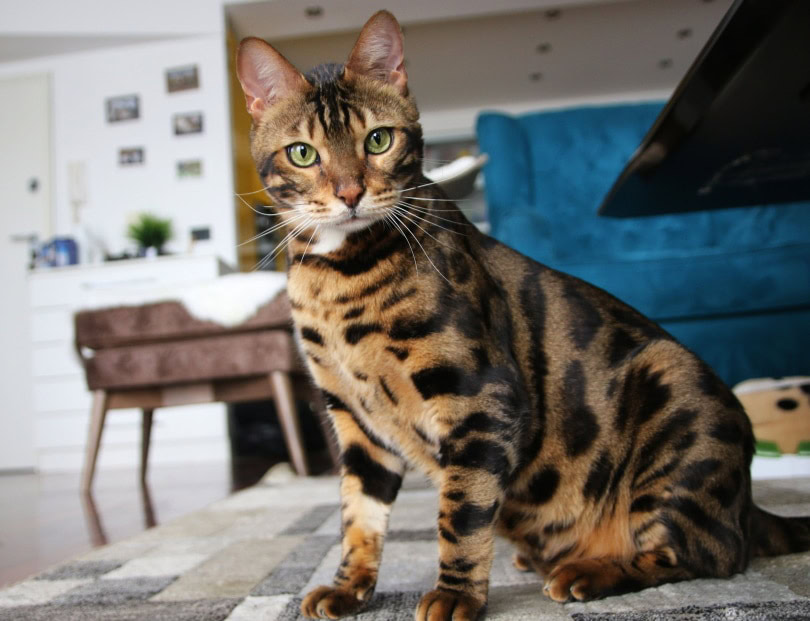

Signs of a Happy Cat
- Relaxed body posture
- Ears in a neutral position
- Eyes shaped normally
- Closed mouth
- Stretching
- Laying down
- Exposed abdomen
- Tail held loosely from the body and sometimes curved upward
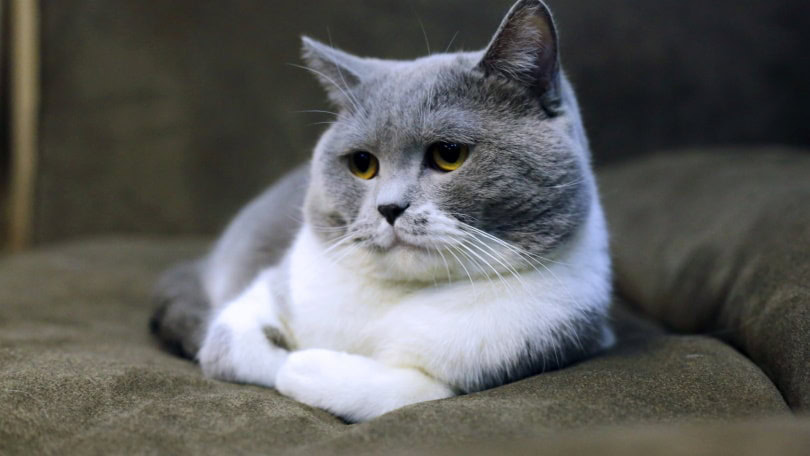
- Related Read: How to Keep a Single Cat Happy

Signs of a Playful Cat
- Ears positioned forward
- Pupils may be dilated
- Whiskers erect and forward
- Tail in an upward position
- Tail swishing if they are focused on a prey or toy
- Crouching or stalking
- Rearing and even wiggling the hind end
- Batting around objects with the paws
- Quick bursts of sprinting and ricocheting off objects
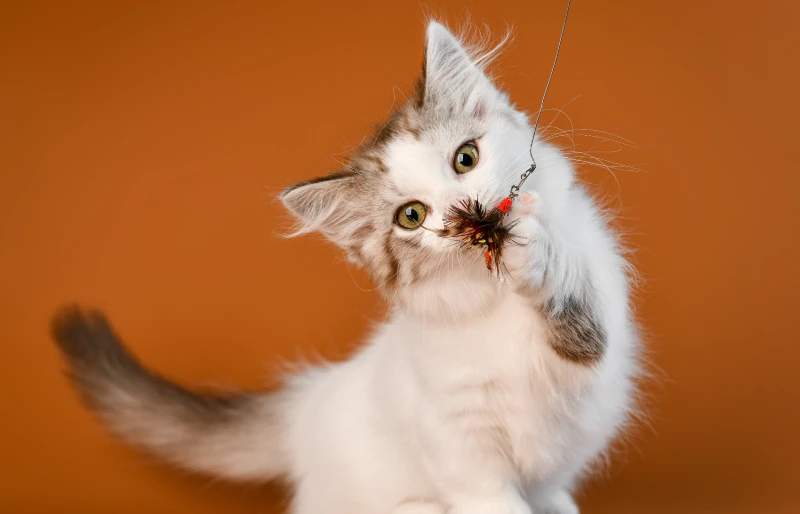

Signs of an Angry Cat
- Lying close to the ground
- Body flat
- Pupils dilated
- Tail and limbs tucked tightly into their body
- Tense posture
- Open mouth with baring teeth
- Paw slightly lifted and ready to strike
- Arched back
- Body held sideways
- Hair raised on the back
- Ears flattened to the head or low and pointing to the sides
- Unbreakable stare
- Hissing or growling
If you are concerned about you cats behavior, we suggest speaking to a veterinarian. Our vets at PangoVet can help put your mind at ease.

Signs of a Stressed or Fearful Cat
- Tense body
- Tailed tucked close to the body
- Head lowered
- Dilated pupils
- Ear rotating to pick up surrounding noises or held low or backward
- Staring with quick blinks and occasional quick side glances to plan an escape
- Bolting and hiding if possible
- Fearful facial expression


Conclusion
Now that you know your cat’s blinks can mean more than just lubrication and cleansing of the eyes, you are better suited to communicate back when your feline live-in decides to speak out by using their eyes. Of course, the slow blink is the much-preferred form of communication, as it means our cats are happy, comfortable, and genuinely enjoying our company.
Featured Image Credit: Pixabay
